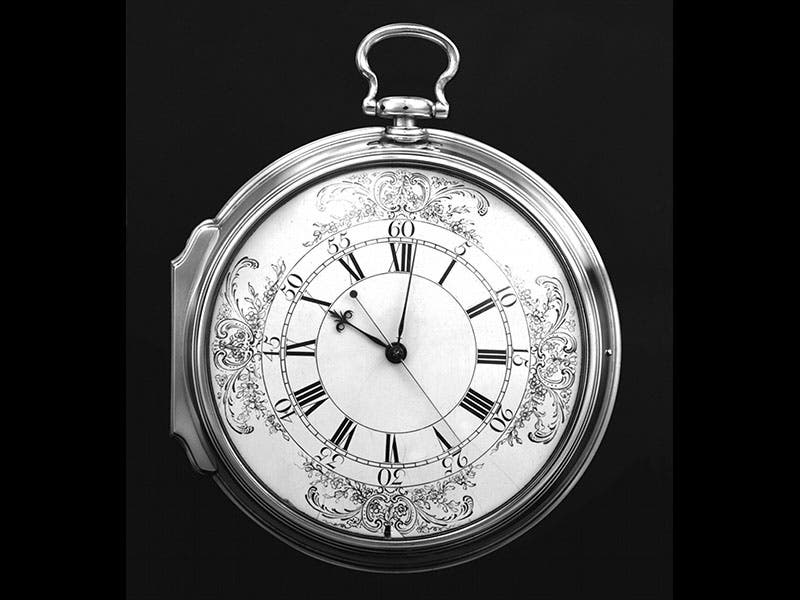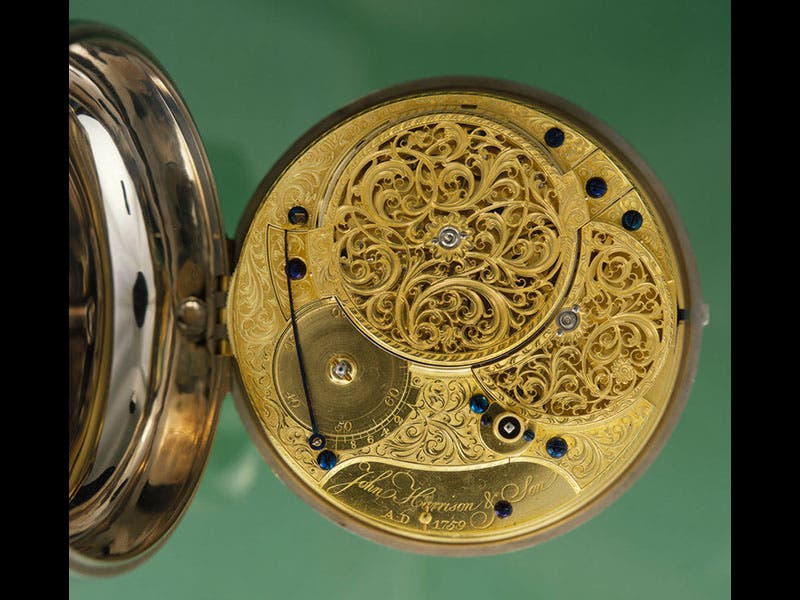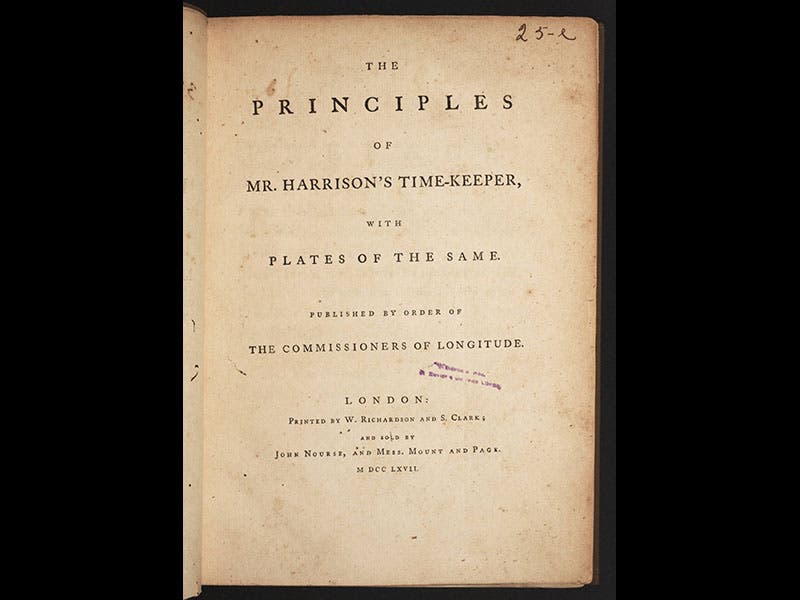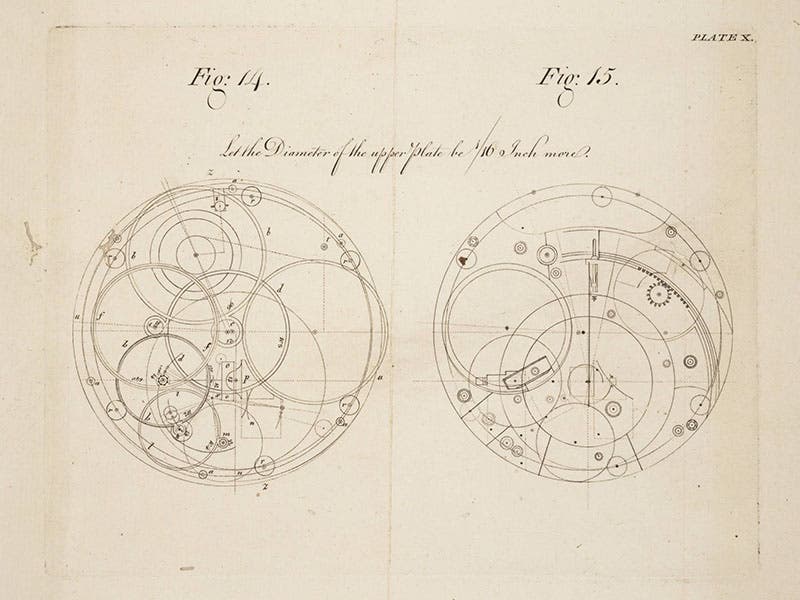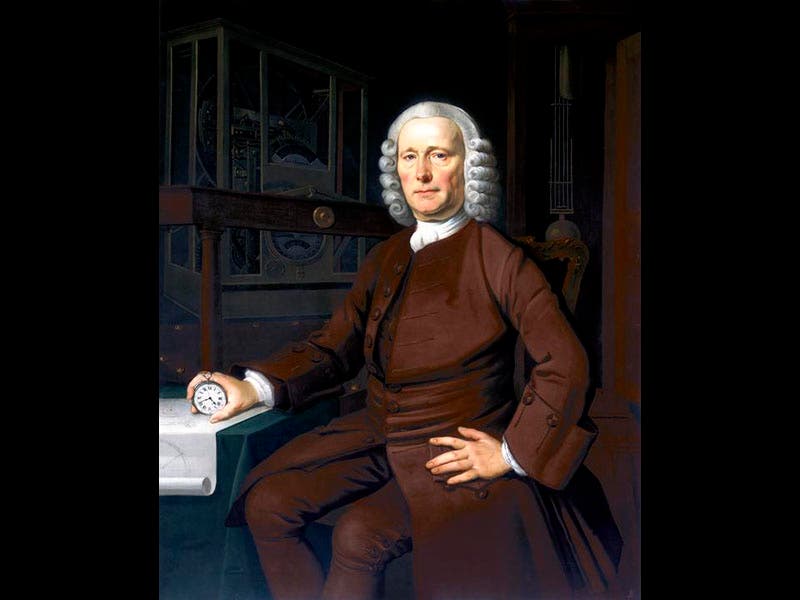Scientist of the Day - John Harrison
John Harrison, a British clockmaker, was born Mar. 24, 1693. In 1714, the British Board of Longitude had offered a reward of £20,000 to anyone who could solve the "longitude problem" by providing a device or technique to allow someone on board ship to determine their longitude with an accuracy of 30 nautical miles. Harrison competed for the prize by building a series of clocks that were so accurate that you could take them on a long voyage and they would still keep time to within a few seconds of a clock back in Greenwich. His first three clocks were large machines, but his fourth (which is now called H4) was a watch (although a big watch, the size of a jumbo cookie). We see two views of H4 above, the face of the watch (first image), and the watch opened up to reveal the beautifully-crafted mechanism within (second image).
H4 (with Harrison's son in charge) sailed for Jamaica in 1761, and when it arrived 2 months later, it was only 5 seconds slow (which corresponds to a longitude error of just two miles). When Harrison applied for the prize, the Board claimed the result was a fluke and demanded a second trial. On the second voyage, in 1764, H4 gave a longitude with an error of 10 miles, and still the Board resisted, although Harrison received a partial payment of £10,000 (in addition to the £4,315 in advances that he had already received). It took an appeal to King George III himself before a final payment of £8750 was made by Parliament in 1773. Harrison was required to turn over his clocks to the Board of Longitude for testing, and detailed drawings were published by the Board as The Principles of Mr. Harrison’s Timekeeper (1767); we have this book in the History of Science Collection. Above we see the title page (third image) and one of the plates showing part of the mechanism (fourth image).
H4 (along with H1-H3) is displayed in the National Maritime Museum in Greenwich. The portrait of Harrison (supposedly holding H4, but in fact he holds a different, smaller watch) is in the collection of the Science Museum (fifth image); that is H3 in the background. The official prize was never awarded. Harrison died on his 83rd birthday, Mar. 24, 1776. King George III would soon have other things to worry about.
Dr. William B. Ashworth, Jr., Consultant for the History of Science, Linda Hall Library and Associate Professor, Department of History, University of Missouri-Kansas City. Comments or corrections are welcome; please direct to ashworthw@umkc.edu.


